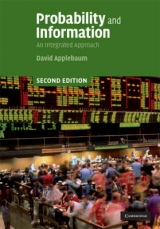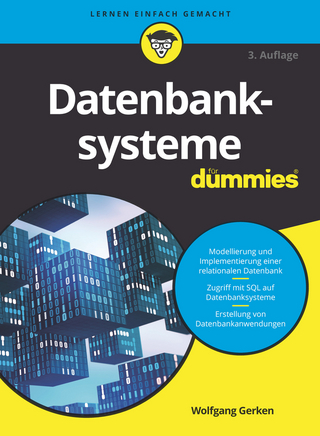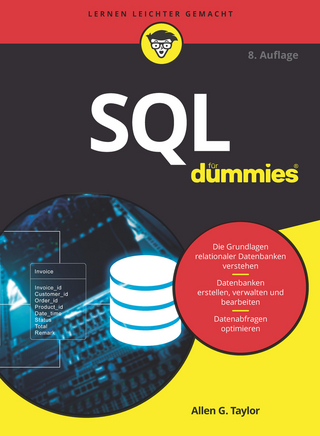
Probability and Information
An Integrated Approach
Seiten
1996
Cambridge University Press (Verlag)
978-0-521-55507-4 (ISBN)
Cambridge University Press (Verlag)
978-0-521-55507-4 (ISBN)
- Titel erscheint in neuer Auflage
- Artikel merken
Zu diesem Artikel existiert eine Nachauflage
This elementary introduction to probability theory and information theory is suitable as a textbook for beginning students in mathematics, statistics or computer science. It provides a clear and systematic foundation to the subject and shows how theoretical ideas can be applied to practical areas such as statistical inference, random walks, statistical mechanics and communications modelling.
This elementary introduction to probability theory and information theory is suitable as a textbook for beginning students in mathematics, statistics or computer science who have some knowledge of basic calculus. It provides a clear and systematic foundation to the subject; the concept of probability is given particular attention via a highly simplified discussion of measures on Boolean algebras. The theoretical ideas are then applied to practical areas such as statistical inference, random walks, statistical mechanics and communications modelling. Topics dealt with include discrete and continuous random variables, entropy and mutual information, maximum entropy methods, the central limit theorem and the coding and transmission of information. Many examples and exercises are included that illustrate how the theory can be applied, for example to information technology. Detailed solutions to most exercises are available electronically from the Cambridge WWW server.
This elementary introduction to probability theory and information theory is suitable as a textbook for beginning students in mathematics, statistics or computer science who have some knowledge of basic calculus. It provides a clear and systematic foundation to the subject; the concept of probability is given particular attention via a highly simplified discussion of measures on Boolean algebras. The theoretical ideas are then applied to practical areas such as statistical inference, random walks, statistical mechanics and communications modelling. Topics dealt with include discrete and continuous random variables, entropy and mutual information, maximum entropy methods, the central limit theorem and the coding and transmission of information. Many examples and exercises are included that illustrate how the theory can be applied, for example to information technology. Detailed solutions to most exercises are available electronically from the Cambridge WWW server.
Preface; 1. Introduction; 2. Combinatorics; 3. Sets and measures; 4. Probability; 5. Discrete random variables; 6. Information and entropy; 7. Communication; 8. Random variables with probability density functions; 9. Random vectors; Exploring further; Appendix 1: Proof by induction; Appendix 2: Lagrange multipliers; Appendix 3: Integration of exp(-x2/2); Appendix 4: Table of probabilities associated with the standard normal distribution; Solutions to selected exercises.
| Erscheint lt. Verlag | 13.7.1996 |
|---|---|
| Zusatzinfo | Worked examples or Exercises; 2 Tables, unspecified; 43 Line drawings, unspecified |
| Verlagsort | Cambridge |
| Sprache | englisch |
| Maße | 178 x 255 mm |
| Gewicht | 652 g |
| Themenwelt | Mathematik / Informatik ► Informatik ► Datenbanken |
| Mathematik / Informatik ► Mathematik ► Wahrscheinlichkeit / Kombinatorik | |
| ISBN-10 | 0-521-55507-8 / 0521555078 |
| ISBN-13 | 978-0-521-55507-4 / 9780521555074 |
| Zustand | Neuware |
| Haben Sie eine Frage zum Produkt? |
Mehr entdecken
aus dem Bereich
aus dem Bereich



